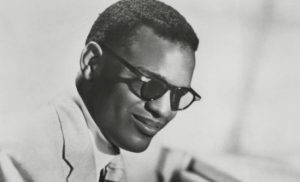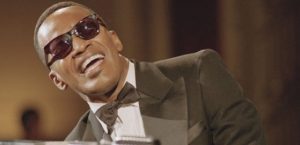Ray Charles is one of the rare artists whose name still reverberates throughout the enormous musical landscape. Charles’ seductive voice, genre-bending, and piano prowess left an indelible mark on music. But, an intriguing tale of financial success is hiding beneath the aesthetics. This piece examines the complex web of factors contributing to Ray Charles net worth. We explore his profitable enterprises, intelligent investments, and global fame. So, come with us as we explore a musical genius’s fascinating life and commercial successes.
Table of Contents
Ray Charles net worth
Ray’s efforts were well-praised, and as a result, he received cash compensation for his efforts. His latest record, the Genius of Ray Charles, is expected to earn him about $495,000. ABC also compensated Ray with a $50,000 advance, which exceeded any prior deals. They included increased royalties and eventual ownership of his master recordings. Ray charles left behind an estimated $75 million net worth when he died.
Earlier Years
On September 23, 1930, Ray Charles Robinson first interacted with the outside world in Albany, Georgia. He started taking piano lessons from a local musician called Pitman when he was only three years old. Unfortunately, Ray’s younger brother George drowned when Ray was only four years old. In addition, Ray’s vision loss resulted from glaucoma; he was blind by age eight.

Aretha helped her son Ray locate a school that welcomed him and other blind African American pupils. From 1937 to 1945, he went to the Florida School of the Deaf and Blind in St. Augustine to learn how to play piano and read braille music.
When Ray was 14, sorrow struck again when his mother died. After his mother and brother died, Ray left school and relocated to Jacksonville to live with his family friend Charles Wayne Powell.
Ray Charles never lost his enthusiasm for music, even in the face of his many hardships. He became famous and wealthy due to his musical prowess, spanned several instruments and styles.
Career
At the Ritz Theatre in LaVilla, Jacksonville, Charles played the piano for $4 a night. People regarded him as a talented musician but needed more performance opportunities to attract a following. So he relocated to Orlando at 16, where he lived in extreme poverty and often went hungry. In 1947, he uprooted and began working as a pianist for Charles Brantley and the Honey Dippers in Tampa. He relocated to Seattle after recording a set of four songs in Florida: “Wondering and Wondering,””Walking and Talking,””Why Did You Go?,” and “I Found My Baby There.”
In April 1949, he established the McSon Trio and produced the song “Confession Blues,” which achieved tremendous popularity nationwide. He also did session work for other musicians, like Cole Porter and Dizzy Gillespie, arranging their tunes. Charles and Lowell Fulson, his musical director, hit the road in 1950 after his first songs sold and settled in Los Angeles. He signed with Swing Time Records and had two more chart-topping pieces in 1951 and 1952, “Baby Let Me Hold Your Hand” and “Kiss Me, Baby.”
After joining Atlantic Records in 1953, Charles released his first successful song that year. After its success, his music “Mess Around” became a fan favourite. His star power skyrocketed from there, making him an early innovator in crossover pop success.
In 1954, he released “I’ve Got a Woman,” his second consecutive R&B No. 2 hit. His following year saw massive success with the singles “This Little Girl of Mine” and “Fool for You.” Charles was performing at the Apollo Theater and Carnegie Hall in New York as a headliner by 1958.
Ray Charles Career Continues
His classic single “What’d I Say” topped the R&B chart 1959. The song was the pinnacle of his Atlantic career. Besides releasing his debut country single that year, he released three more albums for the company.
Many major record companies courted Ray when his contract was up in aq. Finally, in November of 1959, he signed with ABC-Paramount for a yearly advance of $50,000 plus increased royalties from his prior arrangement with Atlantic.

In 1960, he released “Georgia on My Mind,” which became an international smash and won four Grammy Awards with ABC-Paramount. With his next big song, Percy Mayfield’s “Hit the Road Jack,” he won another Grammy. During a flight from Louisiana to Oklahoma City in the early ’60s, Charles’ life was in danger when the pilot lost sight in the snow. The plane made a safe landing, thank goodness. In 1964, authorities arrested him for the third time on charges of heroin possession, derailing his career. After a year of parole and treatment, he returned to the charts in 1966.
Charles’s return to the charts was brief, and his music was seldom played on the radio throughout the 1970s. The rise of trippy rock and more strict rock and R&B styles hurt his success. When ABC fired him in 1974, he started his record label, Crossover Records, and composed many songs. Georgia adopted “Georgia on My Mind” as its official state anthem 1979. After signing with Columbia Records in 1983, he began recording successful country albums, including duets with performers like Willie Nelson.
The White House Correspondents’ Dinner 2003 included Ray as the featured performer. On April 30, 2004, they designated his music studio in Los Angeles as a historical monument, which marked his last public engagement. Also, to his musical success, Charles hosted Saturday Night Live. Besides, he appeared in The Blues Brothers, broadening his appeal outside music.
Personal Life
Ray Charles, a well-known musician, married twice. Their first marriage lasted from 1951 until 1952. After meeting and marrying Della Beatrice Howard Robinson in 1955, he started a family with her three boys. But, Charles’ heroin use and extramarital affairs on the road contributed to the breakdown of their marriage, which ended in divorce in 1977.
Charles fathered 12 kids with ten different women throughout his life, many of whom were the product of his extramarital romances. Norma Pinella was his companion at the time of his death. Charles died from liver failure at 73 on June 10, 2004, in Hills, California. B.B. King and Stevie Wonder were two famous musicians who paid him respect during his burial.
Despite his fame and fortune, Ray Charles was well-known for his charitable work. The Ray Charles Foundation supports education, arts, and hearing and vision research. Besides, he often performed at charity events over his career.
Ray Charles Robinson Jr., David Robinson, and Robert Robinson are the names of Charles’ three sons with Della Beatrice Howard Robinson. Besides, he fathered nine more kids by other women. Then, at a family dinner, Charles told his kids he was sick and handed them half a million dollars.
FAQs
How significant was Ray Charles to the civil rights movement?
Ray Charles was a significant figure in the United States civil rights struggle. “Georgia On My Mind” became a campaign hymn when he refused to perform at segregated bars.
Did Ray Charles pioneer the blending of religious and secular music?
Despite widespread belief to the contrary, Ray Charles was not the pioneering performer who combined gospel and secular music. Likewise, Ray Charles was one of many musicians to experiment with a fusion of R&B and soul.
Was Ray Charles a fantastic singer?
Unfortunately, Ray Charles’s singing voice was not pitch-perfect. But, contrary to popular belief, he had absolute pitch and could discern and reproduce musical notes without outside help.
Conclusion
As we wrap up our investigation into Ray Charles net worth, we can’t help but be impressed by the size of his influence. But, beyond the figures, his life demonstrates the impact that hard work, ability, and an entrepreneurial spirit can have. Ray Charles used his money to improve the world and inspire others. His compassion through his charity work and dedication to social problems indicated more than his wealth. Ray Charles is a legend who altered the direction of music forever and left behind a treasure trove of brilliant songs and a prosperous fortune.








